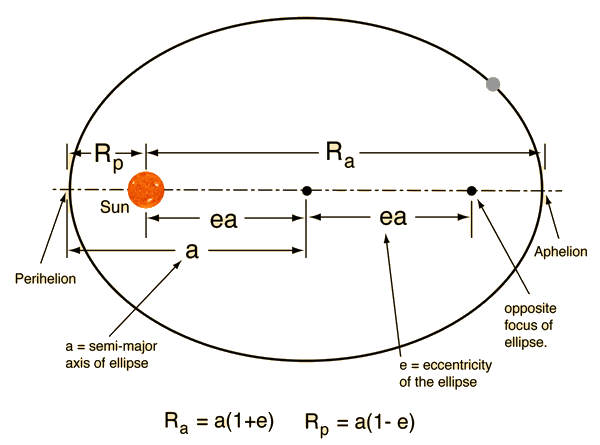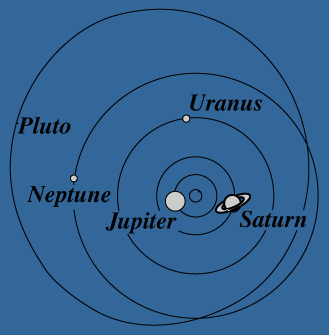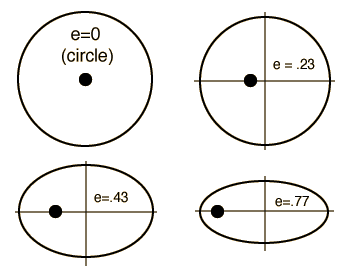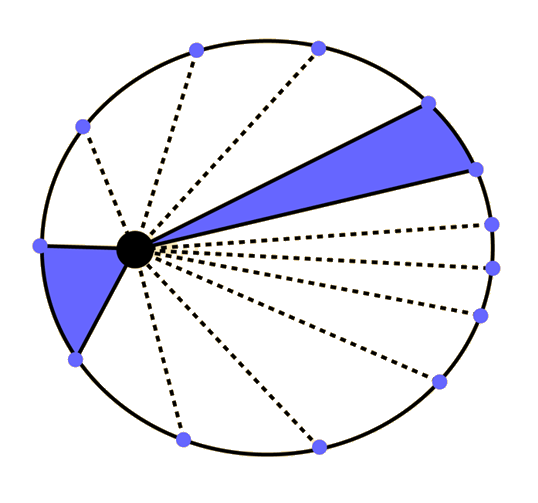The Law of Orbits
All planets move in elliptical orbits, with the sun at one focus.

This is one of Kepler's laws. The elliptical shape of the orbit is a result of the inverse square force of gravity. The eccentricity of the ellipse is greatly exaggerated here.
| Describing an ellipse |
| Developing Kepler's Law of Orbits |
Gravity concepts
Orbit concepts
| HyperPhysics***** Mechanics | R Nave |







